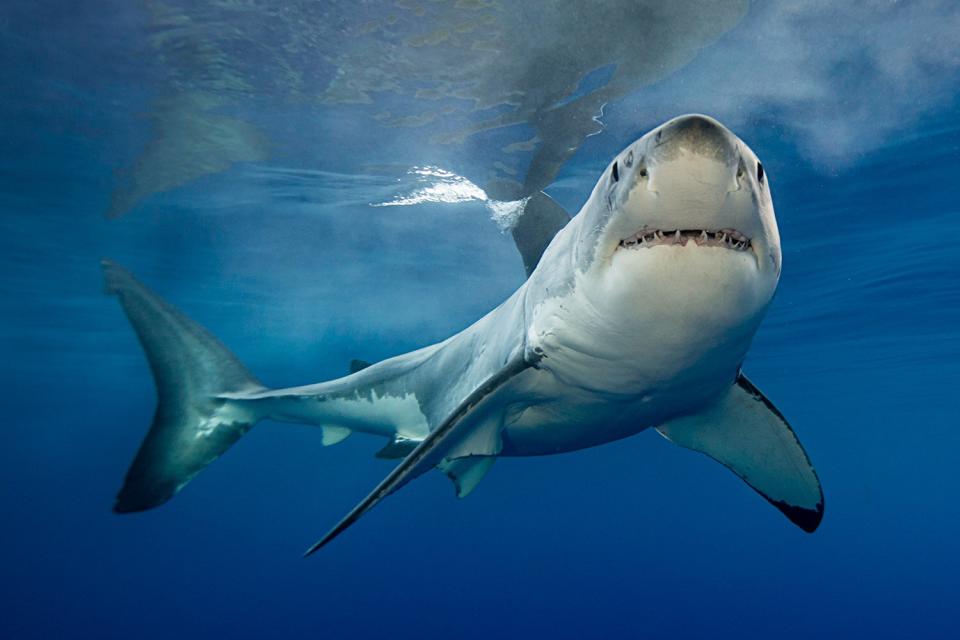Great White Sharks Have Bad Eyesight, Which Can Cause Them to Attack Humans, Study Finds

Getty
Sharks appear to have trouble seeing the difference between humans and seals.
A new study, published in the Journal of the Royal Society Interface, revealed that juvenile great white sharks — responsible for most of the reported great white attacks on humans — have bad eyesight and struggle with telling a human from other animals or objects.
According to Australian researchers, sharks are either completely color blind or have a limited color perception, causing them to rely on motion and brightness while searching for prey because their spatial resolving power is "considerably worse than humans."
RELATED: Surfer Hospitalized After He's Bitten by a Great White Shark in Northern California

Getty
The study used video footage to analyze great white sharks' perception and ability to differentiate objects underwater like rectangular floats, humans swimming, humans paddling surfboards, and pinnipeds — including sea lions and seals.
"From the perspective of a white shark ... neither visual motion nor shape cues allow an unequivocal visual distinction between pinnipeds and humans," the study's results found, "supporting the mistaken identity theory behind some bites."
Dr. Laura Ryan, the lead author of the study and a researcher at Macquarie University's Neurobiology Lab, said surfers have the highest risk for fatal shark attacks.
"We found that surfers, swimmers, and pinnipeds (seals and sea lions) on the surface of the ocean will look the same to a white shark looking up from below because these sharks can't see fine details or colors," she said in a press release.
Never miss a story — sign up for PEOPLE's free daily newsletter to stay up-to-date on the best of what PEOPLE has to offer, from juicy celebrity news to compelling human interest stories.
Earlier this year, a California surfer was hospitalized after he was bitten in the leg by a great white shark. Following the June incident, David Ebert, program director for the Pacific Shark Research Center, told KNTV that sharks are not in the water searching for humans to eat and that, in this case, the creature likely mistook the man for a seal.
"[Humans] are not on the menu. We occasionally have shark incidents like we did today, but it's generally very rare," Ebert said. "In the case of surfers, they probably can't make out exactly what it was. They know there is something there but doesn't have the same type of vibe that a seal does. It's probably a lot of times where you see the bite and spit. Where the shark will bite the surfer and let it go. It's probably more of an investigatory action."

 Yahoo Finance
Yahoo Finance 